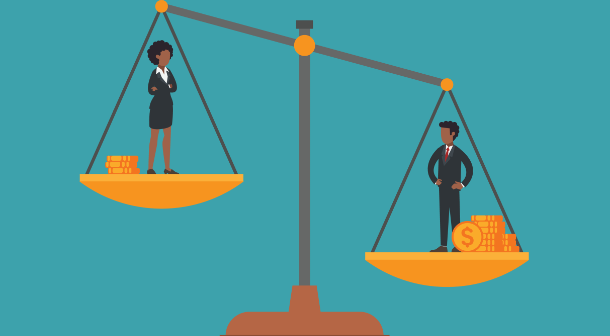In the EU, women work almost 2 months for free each year compared to men and this is no different in maritime industry which is already struggling to maintain a level of gender diversity. Latest data reveal a current gender pay gap of 43% in the UK maritime industry alone.
The gender pay gap is defined as the difference between the average gross hourly earnings of men and women expressed as a percentage of the average gross hourly earnings of men. This means the gap cannot be justified on the grounds that “women work part-time”.
[smlsubform prepend=”GET THE SAFETY4SEA IN YOUR INBOX!” showname=false emailtxt=”” emailholder=”Enter your email address” showsubmit=true submittxt=”Submit” jsthanks=false thankyou=”Thank you for subscribing to our mailing list”]
According to EU statistics for 2020, women earn 14.1% less than men per hour, which means they earn 86 cents for every 1-euro men earn or they work almost 2 months for free each year, compared to men. Even though the situation is improving, progress is very slow in the EU with the gap only decreasing by just under 2% over the last 8 years. Why does this occur?
Reasons that women earn less
The reasons for the gender pay gap go beyond the simple issue of discrimination but result from more various inequalities linked to access to work, progression and rewards:
- Sectoral segregation: Around 30% of the total gender pay gap is explained by the overrepresentation of women in relatively low-paying sectors, in a time when the proportion of male employees is very high (over 80%) in better-paid sectors, such as science, technology, engineering, and mathematics (STEM).
- Work-life balance: Women spend fewer hours in paid work but more hours in unpaid work than men on average, which is linked to childcare and family. In total, women have more work hours per week than men, which might affect their career choices.
- The glass ceiling: The position in the hierarchy influences the level of pay: Less than 10% of top companies’ CEOs are women. The profession with the largest differences in hourly earnings in the EU were managers: 23 % lower earnings for women than for men.
- Discrimination: There are some cases where women earn less than men for doing jobs of equal value.
The gender pay gap in shipping
While female representation across the maritime industry seems to have remained stable at 42% in 2020 globally, there has been a slight increase in the size of the maritime gender pay gap in the UK, which is currently standing at 43%, latest figures by Spinnaker’s Maritime HR Association reveal.
Following a slow and steady decline in previous years, this year’s gap is equivalent to an average male salary of £67,000, compared to £38,500 for females. Maritime remains very far behind the rest of UK industries, with an overall gap estimated at just under 15% for the country. Overall, these figures suggest the UK has one of the largest gender pay gaps in Europe, and the maritime industry has one of the highest gaps in the country.
Meanwhile, another survey by Maritime HR Association in 2020 revealed 95% of all admin roles in maritime are occupied by women, compared to just 5% of executive leadership team roles. This is a main factor driving a gender pay gap of over 40%. The bonus gap is greater still, and while the number of bonus payments was down across the board in 2020, women remain less likely to receive any sort of bonus pay at all.
4 Myths around the gender pay gap
- “More women work part-time, so they should earn less.” – WRONG: Working fewer hours a week means you should take home less pay per month, not less pay per hour.
- “Women earn less because they choose lower earning jobs.” – WRONG: Women tend to earn less per hour than men for the same job, whether it is a highly-skilled profession like a doctor, or a lower-skilled job such as a salesperson. The gender pay gap exists across our economy and in all sectors and occupations.
- “Men are better educated, so should earn more”. – WRONG: Today almost 60% of graduates in the EU are women.
- “The gender pay gap has been around for so long, there is nothing we can do about it.” – WRONG: The European Commission has developed an Action Plan which prioritizes eight areas for action to address the underlying causes of the gender pay gap.
The way forward
EU statistics estimate the impact of COVID-19 is expected to worsen the gender diversity landscape – with women across all industries expected to be more likely to face redundancy or experience changes to roles or hours.
The benefits of diversity come from employing women at all levels of the hierarchy and across all job functions, and this is where the maritime industry challenges lie. The redefined landscape driven by COVID-19 provides a perfect opportunity to promote improved work-life balance and shared family responsibilities for all employees. Ensuring equal pay makes sure that, we attract the best talents, whatever their gender, in organizations and companies.
Did you know?
- Gender pay gap much lower for young employees in the EU.
- Per country, Spinnaker data revealed Denmark as having the lowest gender pay gap – at 30%– for maritime.
- The EU celebrates the Equal Pay Day on a different day each year, marks the day when women symbolically stop getting paid compared to their male colleagues for the same job. In 2020, this Day was the 10th of November.































































